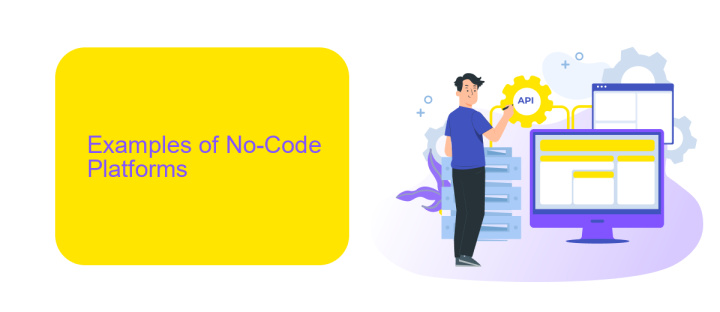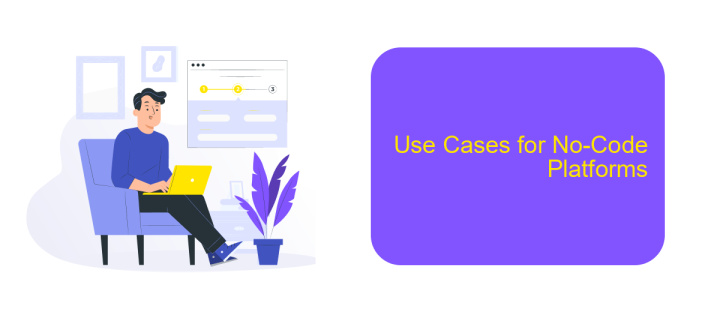No-Code Platforms Examples
No-code platforms are revolutionizing the way individuals and businesses develop software by enabling the creation of applications without the need for traditional programming skills. These platforms offer intuitive, drag-and-drop interfaces that simplify the development process. In this article, we will explore various examples of no-code platforms that empower users to build websites, mobile apps, and automated workflows effortlessly.
Introduction
No-code platforms have revolutionized the way businesses and individuals develop software, offering an accessible alternative to traditional coding. These platforms empower users to create applications, websites, and automated workflows without needing extensive programming knowledge. This democratization of software development has opened up new opportunities for innovation and efficiency.
- Ease of Use: No-code platforms are designed with user-friendly interfaces that allow drag-and-drop functionality.
- Cost-Effective: They significantly reduce the need for expensive developer resources.
- Speed: Projects that once took months can now be completed in days or even hours.
- Flexibility: These platforms cater to a wide range of applications, from simple websites to complex business processes.
One notable example is ApiX-Drive, a no-code platform that specializes in setting up integrations between various applications and services. By using ApiX-Drive, businesses can automate workflows and ensure seamless data transfer without writing a single line of code. This not only saves time but also enhances productivity by allowing teams to focus on more strategic tasks.
Examples of No-Code Platforms

No-code platforms are revolutionizing the way individuals and businesses create applications without the need for extensive programming knowledge. One of the leading examples is Bubble, which allows users to design, develop, and launch fully functional web applications visually. Another popular platform is Adalo, known for its user-friendly interface that enables the creation of mobile apps with ease. These platforms empower users to bring their ideas to life quickly and efficiently.
For those looking to automate workflows and integrate various services, platforms like ApiX-Drive are invaluable. ApiX-Drive simplifies the process of connecting different applications, allowing users to automate data transfer and streamline operations without writing a single line of code. Other notable mentions include Webflow for web design, Airtable for database management, and Zapier for automation. Each of these platforms caters to different needs, making no-code solutions accessible to a wide range of users.
Benefits of Using No-Code Platforms

No-code platforms have revolutionized the way businesses approach software development by allowing users to create applications without any programming knowledge. This democratization of technology empowers non-technical users to bring their ideas to life quickly and efficiently.
- Cost Efficiency: No-code platforms significantly reduce development costs by eliminating the need for expensive developers and lengthy development cycles.
- Faster Time to Market: These platforms enable rapid prototyping and deployment, allowing businesses to respond to market demands swiftly.
- Ease of Use: With intuitive drag-and-drop interfaces, no-code platforms are accessible to users of all skill levels, fostering innovation across the organization.
- Flexibility and Scalability: No-code solutions can be easily adjusted and scaled as business needs evolve, ensuring long-term viability.
- Enhanced Integration: Services like ApiX-Drive facilitate seamless integration with various tools and systems, streamlining workflows and improving efficiency.
By leveraging no-code platforms, organizations can focus on strategic initiatives rather than getting bogged down by technical complexities. This shift not only accelerates growth but also fosters a culture of innovation and agility within the company.
Use Cases for No-Code Platforms

No-code platforms are transforming the way businesses operate by enabling users to create applications without writing a single line of code. These platforms are particularly beneficial for small businesses and startups that lack extensive technical resources. They allow for rapid prototyping and deployment of applications, significantly reducing time-to-market.
One of the most common use cases for no-code platforms is the automation of routine business processes. By automating tasks such as data entry, reporting, and customer relationship management, companies can enhance operational efficiency and reduce human error. Additionally, no-code platforms are excellent for building customer-facing applications, like websites and mobile apps, which can be customized to meet specific business needs.
- Automating business workflows
- Creating internal tools for team collaboration
- Developing customer-facing applications
- Setting up integrations with other software services
Services like ApiX-Drive are particularly useful for setting up integrations between various software applications without any coding. This allows businesses to seamlessly connect their no-code applications with other tools they use, further enhancing productivity and streamlining operations. Overall, no-code platforms provide a versatile solution for a wide range of business challenges.
- Automate the work of an online store or landing
- Empower through integration
- Don't spend money on programmers and integrators
- Save time by automating routine tasks
Tips for Choosing a No-Code Platform
When choosing a no-code platform, first identify your specific needs and objectives. Consider the types of projects you plan to build, whether it's a website, mobile app, or workflow automation. Evaluate the platform's ease of use, available templates, and customization options. Ensure that the platform supports the necessary features and tools required for your project, such as drag-and-drop functionality, responsive design, and robust security measures.
Another crucial factor is integration capabilities. Verify that the platform can seamlessly connect with other tools and services you use. For instance, ApiX-Drive is an excellent service for setting up integrations, allowing you to automate workflows and enhance productivity. Check for pre-built integrations or the ability to connect via APIs. Additionally, assess the platform's scalability, pricing plans, and customer support to ensure it aligns with your long-term goals and budget. By carefully considering these aspects, you can select a no-code platform that best fits your requirements.
FAQ
What are No-Code Platforms?
Can I integrate different services using No-Code platforms?
Are No-Code platforms suitable for complex projects?
How secure are No-Code platforms?
Can I automate workflows using No-Code platforms?
Time is the most valuable resource in today's business realities. By eliminating the routine from work processes, you will get more opportunities to implement the most daring plans and ideas. Choose – you can continue to waste time, money and nerves on inefficient solutions, or you can use ApiX-Drive, automating work processes and achieving results with minimal investment of money, effort and human resources.


